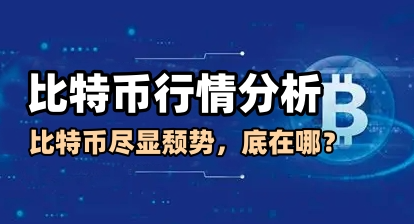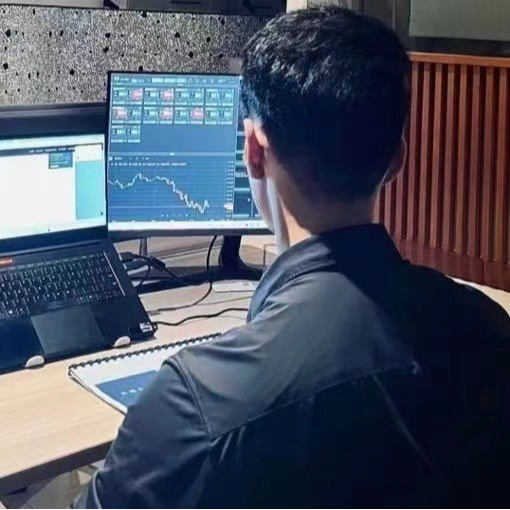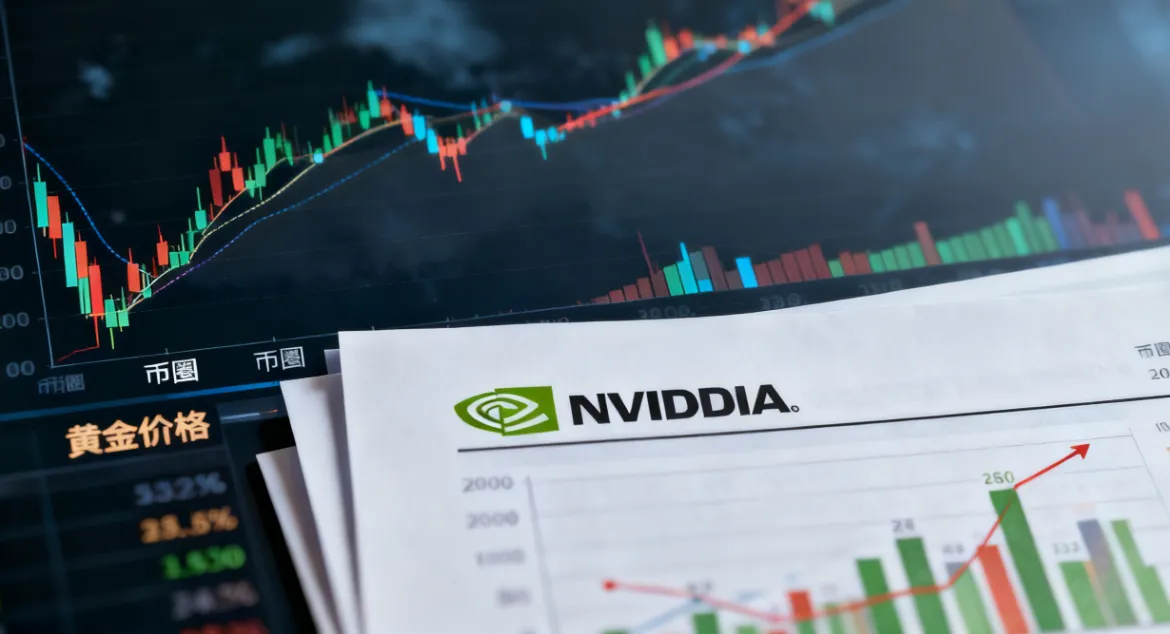In the first quarter of 2025, the Ethereum development team officially announced the network upgrade plan codenamed "Pectra." As Ethereum's first major update in 11 months, Pectra is tasked with multiple missions: to enhance user experience and network efficiency through core features such as account abstraction and validator optimization, while also solidifying its leadership position as the world's largest smart contract platform amid the rise of competitors like Solana and Ethereum's own "identity crisis." This article will deeply analyze the strategic significance and potential impact of this upgrade from multiple dimensions, including technological breakthroughs, ecological competition, governance controversies, and market dynamics.
1. The Technological Landscape of the Pectra Upgrade: From Account Revolution to Validator Efficiency Leap
According to the roadmap disclosed by Tim Beiko, head of protocols at the Ethereum Foundation, the Pectra upgrade is set to initiate its first phase of testing on the Holesky testnet on February 26, expanding to the Sepolia testnet on March 5. If progress goes smoothly, the mainnet deployment will be completed in early April. This upgrade includes eight core improvement proposals (EIPs), two of which are widely regarded as strategic innovations:
- EIP-7702: The "Last Mile" Breakthrough of Account Abstraction
- As a key component of Ethereum's long-term technical roadmap, account abstraction aims to blur the lines between user wallets (EOA, externally owned accounts) and smart contract accounts, allowing ordinary users to enjoy contract-level functionality without needing to understand complex private key management. EIP-7702 achieves three key improvements by granting EOA accounts temporary smart contract capabilities: Multi-currency Gas payments: Users can directly use stablecoins like USDC and DAI to pay transaction fees, breaking the limitation of ETH as the sole Gas currency and lowering the usage threshold for non-ETH holders.
- Social recovery and permission management: Supports wallet permission recovery through multi-signature and biometric mechanisms, addressing the issue of lost private keys; allows for independent permissions to be set for different operations (e.g., limited to transfers or contract interactions), enhancing security.
- Batch transactions and fee delegation: Users can bundle multiple operations into a single transaction, reducing Gas costs; enterprises can pay Gas fees on behalf of users, promoting a "zero-threshold" user experience for Web3 applications.
This upgrade marks a substantial leap for Ethereum's account system from being "tech geek-friendly" to "user-friendly." According to Dune Analytics data, smart contract wallets supporting account abstraction (such as Argent and Safe) currently account for only 3.7% of active Ethereum addresses, and EIP-7702 is expected to raise this proportion to over 20%, accelerating the influx of hundreds of millions of new users.
- EIP-7251: Increased Validator Staking Limits and Node Efficiency Revolution
- Currently, Ethereum validators need to stake 32 ETH to participate in consensus, and over-staking requires running multiple nodes, leading to high operational costs for large institutions. EIP-7251 raises the staking limit for a single validator to 2048 ETH (a 64-fold increase) and introduces an "aggregate proof" mechanism, resulting in two major transformations: Node operation centralization: Institutions can merge multiple validators into a single node for management, reducing hardware costs by over 80%. Leading exchanges like Coinbase and Kraken are expected to optimize their staking service profit margins through this.
- Validator queue acceleration: Currently, new validators must queue for weeks to activate, but after the upgrade, network throughput will increase, and the activation period may be shortened to less than three days. This will help attract more capital to participate in staking, further enhancing network security (currently, the proportion of staked ETH is only 26%, far below the average level of PoS chains).
Additionally, Pectra includes technical improvements such as EIP-3074 (transaction batch processing optimization) and EIP-2537 (precompiled contract efficiency enhancement), collectively forming a key puzzle piece in Ethereum's evolution from "programmable currency" to "programmable economic infrastructure."

2. Intensifying Ecological Competition: Ethereum's "Moat" Defense Battle
Despite ongoing technological upgrades, Ethereum is facing unprecedented ecological competitive pressure. In the fourth quarter of 2024, the trading volume on Solana's on-chain DEX surpassed that of Ethereum for the first time, with its native token SOL rising over 700% throughout the year, while ETH only increased by 90%. Meanwhile, customized application chains in the Cosmos ecosystem and modular architecture projects like Avalanche subnets continue to siphon developer resources. Against this backdrop, the Pectra upgrade is not just a technical iteration but a strategic defense concerning ecological dominance.
- User Experience Competition: Ethereum's "Lower Market" Challenge
By 2025, the Solana network continues to attract a large number of high-frequency trading users with its high throughput and low transaction fees. Solana's design goal is high throughput, capable of processing up to 65,000 transactions per second (TPS), thanks to its unique Proof of History (PoH) mechanism. Additionally, Solana's transaction fees remain extremely low, averaging about 0.0001 SOL (approximately $0.02) per transaction, making it an ideal platform for applications requiring high-frequency trading (such as meme coin trading and NFT minting). In contrast, although Ethereum's mainnet Gas fees have significantly decreased since their peak in 2021, by 2025, the average transaction fee is still over $1.
This fee level remains a challenge for large-scale consumer-facing applications. To address this issue, Ethereum is working to reduce these fees through its transition to Proof of Stake (PoS) and the introduction of Layer 2 scaling solutions, but high Gas fees continue to be a significant cost for users and developers. Pectra lowers the usage threshold through account abstraction, effectively paving the way for Layer 2 scaling solutions (such as Optimism and Arbitrum)—users can enjoy low-cost transactions on L2 while seamlessly leveraging mainnet security through EIP-7702. This "mainnet security + Layer 2 performance" hybrid architecture may become a core strategy to counter high-performance chains like Solana.
- Capital Efficiency Battle: Institutional Stakers' "Voting with Their Feet"
As of February 2025, the total value of ETH locked in the Ethereum beacon chain is approximately $70 billion. However, due to the complexity of node operations, many institutional investors choose to participate in staking indirectly through liquid staking derivatives (LSD) platforms, such as Lido (with a market share of about 70%) and Rocket Pool (about 4.6%), raising concerns about decentralized risks. The increase in market concentration may lead to single points of failure and governance control issues. In response, the Ethereum community is exploring diversified staking solutions to balance security and decentralization. At the same time, new LSD projects are continuously emerging, attempting to challenge the existing landscape with more competitive technologies and economic models. Although LSD platforms enhance staking convenience, they also bring centralization risks, and the Ethereum community must continue to monitor and optimize governance structures to maintain network security and decentralization. EIP-7251 is expected to increase the proportion of direct institutional staking from the current 18% to over 35%, reducing reliance on third-party services. In contrast, Solana's validator entry threshold is lower (with no minimum staking requirement), but the number of nodes (about 2,000) is only 0.2% of Ethereum's (over 900,000), raising questions about its level of decentralization. Ethereum's move aims to solidify its differentiated advantage of "security and decentralization."
- Developer Ecosystem Defense Battle: The Route Game of Modularization and Integration
Ecosystems like Cosmos and Polkadot attract vertical domain developers through modular architectures (application chains customizing consensus mechanisms), while Ethereum insists on a "Rollup-centric roadmap," providing low-cost data availability for Layer 2 through upgrades like EIP-4844 (Proto-Danksharding). Although Pectra does not directly involve scaling, its account abstraction improvements significantly reduce the complexity for developers in managing Gas costs for users. Combined with innovations like Uniswap V4's Hook mechanism and ERC-7621 (modular token standard), Ethereum is building a "highly composable and developer-friendly" ecosystem to counter the fragmentation risks of modular chains.

3. Controversies and Challenges: Governance Concerns Behind the Upgrade
The advancement of the Pectra upgrade has not been smooth sailing. The Ethereum community has recently erupted in heated debates over issues such as "foundation centralization" and "deviation from the technical roadmap," exposing deep-seated contradictions in its governance mechanism.
- Turbulence in Foundation Leadership and Community Trust Crisis
As of early 2025, the Ethereum Foundation (EF) faces questions regarding internal governance and funding transparency. Recently, a senior core developer left the project due to internal disputes. Additionally, the EF holds approximately $845 million in ETH reserves, but the lack of transparency in its fund usage has raised community concerns about fund management. In response to these criticisms, the EF announced it would allocate 50,000 ETH (approximately $135 million) to support Ethereum's decentralized finance (DeFi) ecosystem. However, community members remain concerned about the EF's fund usage and governance structure, believing that the core development team relies too heavily on donations from platforms like Gitcoin, which may lead to the risk of "technical oligopoly." Although Tim Beiko emphasized that all EIPs for "Pectra" have undergone community discussions, some developers believe that complex proposals like EIP-7702 did not sufficiently consult wallet service providers, potentially leading to compatibility issues.
- The Eternal Paradox of Efficiency and Decentralization
EIP-7251 allows a single validator to stake 2048 ETH, which improves capital efficiency but also exacerbates the risk of node centralization—if an entity controls 10,000 ETH, the number of nodes required will drop from 312 to 5, potentially lowering attack costs. In this regard, Vitalik Buterin recently acknowledged in an interview that "a balance must be sought between efficiency and censorship resistance," proposing the introduction of distributed validator technology (DVT) as a supplement. However, the maturity of DVT has not yet reached production environment requirements, and the Pectra upgrade may be forced to compromise between ideals and reality.
- Competitors' "Compliance Sniping"
As of 2025, competitors like Solana have made significant progress in the compliance field. In February 2025, the European Union fully implemented the Markets in Crypto-Assets Regulation (MiCA), introducing strict authorization processes, detailed token issuance rules, and robust anti-money laundering (AML) protocols.
However, there is currently no public information indicating that the Solana Foundation has obtained a stablecoin issuance license under the MiCA framework. Meanwhile, Ethereum is still in discussions with the U.S. Securities and Exchange Commission (SEC) regarding the legal classification of its Proof of Stake (PoS) mechanism. If regulators view staking services as securities issuance, Ethereum's proposals, such as EIP-7251, aimed at improving staking convenience, may increase compliance burdens. Therefore, the Ethereum community needs to establish a more robust regulatory communication framework while advancing technological upgrades to ensure compliance in an ever-changing regulatory environment.

4. Future Outlook: Where Does Ethereum Go After Pectra?
The Pectra upgrade is a key midway point in Ethereum's "Serenity" roadmap, expected to be implemented in the first quarter of 2025.
Looking ahead, Ethereum's technological evolution may focus on the following areas:
Full implementation of Danksharding: Further reducing Layer 2 transaction costs through data sharding technology, aimed at meeting the demands of Web2 applications for efficient and low-cost transactions.
Widespread adoption of light clients: Enabling mobile devices to directly verify blockchain states, promoting the penetration of decentralized applications (DApps) in the consumer market, and enhancing user experience and engagement.
Quantum-resistant signature algorithms: Proactively preparing for security measures in the post-quantum era, ensuring that the Ethereum network remains secure and resilient against future quantum computing threats.
From an ecological strategy perspective, Ethereum needs to consolidate its advantages on three levels:
- User experience layer: Building a "Gas-free awareness" super application entry point based on account abstraction;
- Capital layer: Attracting trillions of dollars in traditional institutional funds through staking optimization;
- Governance layer: Promoting decentralized reforms within the foundation and establishing a more inclusive decision-making mechanism.
Despite facing internal and external challenges, Ethereum still boasts the largest developer community, the highest total value locked (TVL exceeding $50 billion), and the most mature decentralized finance (DeFi) ecosystem. The Pectra upgrade may not immediately reverse ETH's market performance, but its technological foundation and ecological resilience remain Ethereum's greatest confidence in defending its throne in the "third blockchain world war." This upgrade is not only about code iteration but also a conceptual expedition regarding the future of open finance.
If you have any questions, you can contact us through the following official channels:
AiCoin Official Website: www.aicoin.com
Telegram: t.me/aicoincn
Twitter: x.com/AiCoinzh
Email: support@aicoin.com
Group Chat: Customer Service Yingying、Customer Service KK
免责声明:本文章仅代表作者个人观点,不代表本平台的立场和观点。本文章仅供信息分享,不构成对任何人的任何投资建议。用户与作者之间的任何争议,与本平台无关。如网页中刊载的文章或图片涉及侵权,请提供相关的权利证明和身份证明发送邮件到support@aicoin.com,本平台相关工作人员将会进行核查。




